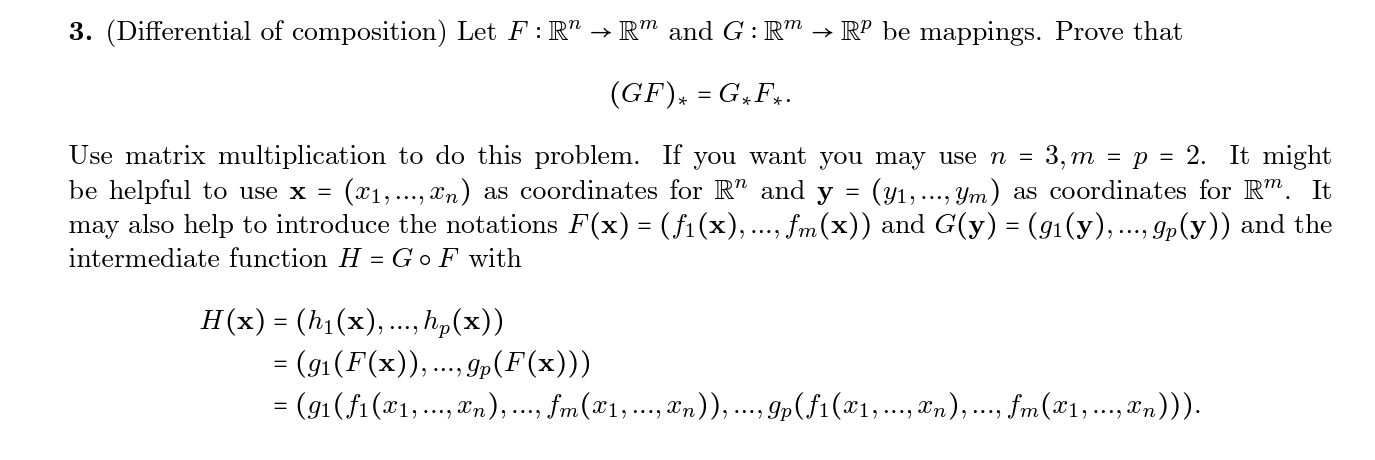Home /
Expert Answers /
Advanced Math /
3-differential-of-composition-let-f-mathbb-r-n-rightarrow-mathbb-r-m-and-g-pa378
(Solved): 3. (Differential of composition) Let \( F: \mathbb{R}^{n} \rightarrow \mathbb{R}^{m} \) and \( G: ...
3. (Differential of composition) Let \( F: \mathbb{R}^{n} \rightarrow \mathbb{R}^{m} \) and \( G: \mathbb{R}^{m} \rightarrow \mathbb{R}^{p} \) be mappings. Prove that \[ (G F)_{\star}=G_{\star} F_{\star} . \] Use matrix multiplication to do this problem. If you want you may use \( n=3, m=p=2 \). It mig be helpful to use \( \mathbf{x}=\left(x_{1}, \ldots, x_{n}\right) \) as coordinates for \( \mathbb{R}^{n} \) and \( \mathbf{y}=\left(y_{1}, \ldots, y_{m}\right) \) as coordinates for \( \mathbb{R}^{m} \). may also help to introduce the notations \( F(\mathbf{x})=\left(f_{1}(\mathbf{x}), \ldots, f_{m}(\mathbf{x})\right) \) and \( G(\mathbf{y})=\left(g_{1}(\mathbf{y}), \ldots, g_{p}(\mathbf{y})\right) \) and \( \mathrm{t} \) intermediate function \( H=G \circ F \) with \[ \begin{aligned} H(\mathbf{x}) &=\left(h_{1}(\mathbf{x}), \ldots, h_{p}(\mathbf{x})\right) \\ &=\left(g_{1}(F(\mathbf{x})), \ldots, g_{p}(F(\mathbf{x}))\right) \\ &=\left(g_{1}\left(f_{1}\left(x_{1}, \ldots, x_{n}\right), \ldots, f_{m}\left(x_{1}, \ldots, x_{n}\right)\right), \ldots, g_{p}\left(f_{1}\left(x_{1}, \ldots, x_{n}\right), \ldots, f_{m}\left(x_{1}, \ldots, x_{n}\right)\right)\right) . \end{aligned} \]
